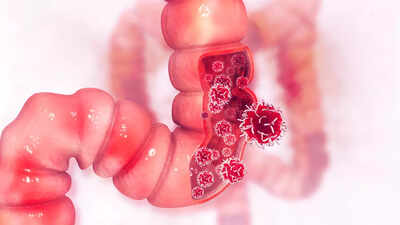
Colon cancer is an uncontrolled growth of cells that begins in a part of the large intestine called the colon. The colon is the first and longest part of the large intestine. The large intestine is the last part of the digestive system.
For years, experts have hinted that movement may hold a secret power in the fight against cancer. Now, a global phase 3 clinical trial has offered the strongest evidence yet. Spanning over a decade and involving nearly 900 patients across six countries, this study focused on colon cancer patients who had completed surgery and chemotherapy.
The findings? A structured exercise programme doesn't just help in healing, it may actually tilt the scales in favour of survival.
Exercise can beat cancer: But what’s the truth?
There’s a growing belief that physical activity might help in preventing cancer or at least reduce its recurrence. While past studies only hinted at this link, this new phase 3 trial, published in the New England Journal of Medicine, confirms it with rigorous data. Patients in the trial who followed a structured exercise routine for three years after chemotherapy saw a 28% lower risk of cancer recurrence and a 37% reduction in overall risk of death, compared to those who only received health advice.This isn’t just another wellness trend—it’s real science changing the game.

Exercise can also help to reduce the risk of all sorts of cancer.
So, how exactly does exercise work its magic on the body after cancer treatment?
When the body moves, it isn’t just burning calories. It’s triggering a series of deeply biological responses: boosting metabolism, encouraging beneficial gut bacteria, and repairing the gut lining. This is crucial because a healthy gut barrier helps stop cancer-promoting substances from entering the bloodstream.Exercise increases the demand for glucose in muscles and organs, which leaves less fuel for potential tumour cells to thrive.
It also regulates insulin levels, which, when too high, are linked to several cancers including colon, breast and prostate.
More than movement: Exercise as an immune ally
Beyond metabolism, exercise plays another vital role—it strengthens the immune system’s surveillance ability. This means it helps the body spot and destroy rogue cells that could turn cancerous. Think of it as constantly updating the body’s internal security system. Over time, this vigilance can lower the chance of relapse or even new cancers forming.

Lifestyle changes such as diet and exercise too can help.
While chemotherapy and drugs attack existing cancer cells, exercise helps the body stay watchful and strong, working quietly but powerfully behind the scenes.
Exercise vs drugs
The findings have turned heads for another reason: the results from the exercise group outperformed what many cancer drugs achieve. While new medications often get approved for much smaller benefits (and come with toxicity risks), exercise delivered significant survival improvements with relatively mild side effects, mainly muscle-related issues in around 18% of participants.This doesn’t mean exercise can replace drugs, but it can be a game-changing partner. Together, they make a more hostile environment for cancer to grow back.
Early Detection Saves Lives: Watch for These Ovarian Cancer Symptoms
Building a routine that works
Structured movement isn’t a one-size-fits-all. For cancer survivors, personalised programmes should be designed by health professionals and adjusted gently over time. A blend of 150 minutes per week of aerobic and strength training, like walking, cycling, or light resistance workouts, is a good goal.For those with a family history of colon cancer, regular physical activity, reduced red meat intake, a fibre-rich diet, and early screenings are essential. Prevention starts long before diagnosis, and habits built early can be the best protection.

 1 day ago
51
1 day ago
51




























 English (US)
English (US)